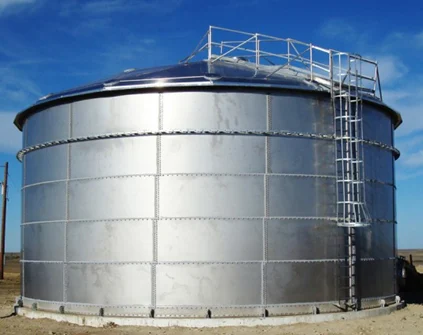In the world of wastewater tanks for numerous industrial and home applications, polyethylene sticks out as a flexible and dependable cloth. This article explores the severa advantages of Polyethylene Wastewater Tanks, detailing their advantages and packages in cutting-edge water control structures.
Introduction to Polyethylene Wastewater Tanks
Polyethylene, a sort of plastic regarded for its sturdiness and flexibility, has grow to be an increasing number of popular within the production of wastewater tanks. These tanks are important components in managing wastewater, imparting storage answers which might be both price-powerful and green.
Advantages of Polyethylene Wastewater Tanks
1. Durability and Longevity
Polyethylene tanks are highly durable and resistant to corrosion, making them ideal for long-term use in various environmental conditions. Unlike metal tanks, they do not rust or degrade over time, ensuring a longer lifespan and minimal maintenance requirements.
2. Lightweight Construction
One of the key advantages of polyethylene tanks is their lightweight nature. This makes them easier to transport, handle, and install compared to heavier materials like concrete or steel. The lightweight design also reduces installation costs and allows for easier customization and placement.
3. Chemical Resistance
Polyethylene is inherently resistant to a wide range of chemicals commonly found in wastewater, including acids, alkalis, and various industrial fluids. This chemical resistance ensures that the tank maintains its structural integrity and functionality over time, even in harsh industrial environments.
4. Versatility in Design
Polyethylene tanks can be manufactured in various shapes, sizes, and configurations to suit specific ground storage tanks needs. Whether for above-ground or below-ground installations, polyethylene tanks offer flexibility in design, allowing for seamless integration into existing infrastructure or new construction projects.
5. Cost-Effectiveness
Compared to traditional materials like concrete or stainless steel, polyethylene tanks are generally more cost-effective to manufacture, transport, and install. The reduced weight and ease of handling contribute to lower installation costs, while the minimal maintenance requirements translate to long-term savings.
6. Eco-Friendly Properties
Polyethylene is a recyclable material, making it an environmentally friendly choice for wastewater tanks. Manufacturers often use recycled polyethylene in tank production, further reducing environmental impact and promoting sustainability in water management practices.
Applications of Polyethylene Wastewater Tanks
1. Industrial Wastewater Management
Polyethylene tanks are widely used in industrial settings for storing and treating wastewater generated from manufacturing processes. Their chemical resistance and durability make them suitable for handling various types of industrial effluents safely and efficiently.
2. Residential and Community Water Systems
In residential and community settings, polyethylene tanks serve as vital components of water storage and distribution systems. They can store potable water or be used for rainwater harvesting, supporting sustainable water management practices in urban and rural areas alike.
3. Agricultural Applications
Farmers and agricultural businesses use polyethylene tanks for storing water for irrigation or livestock purposes. The lightweight and portable nature of these tanks make them ideal for temporary or seasonal water storage needs on farms and agricultural properties.
Conclusion
Polyethylene wastewater tanks offer a multitude of advantages that make them an excellent choice for various water storage and management applications. From their durability and chemical resistance to their cost-effectiveness and eco-friendly properties, polyethylene tanks continue to play a pivotal role in modern water infrastructure projects. As the demand for efficient and sustainable water solutions grows, polyethylene tanks are poised to remain a cornerstone in the field of wastewater management.






No comments:
Post a Comment